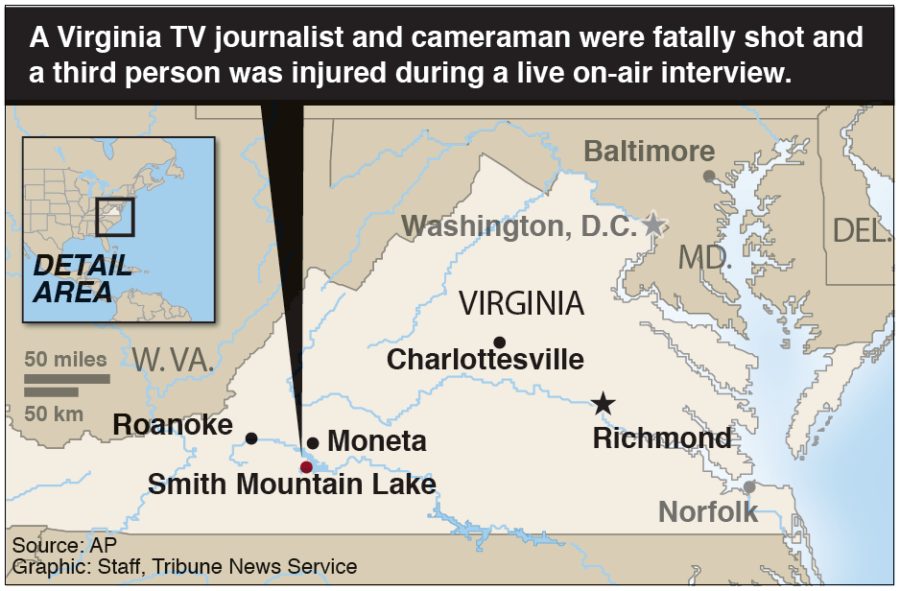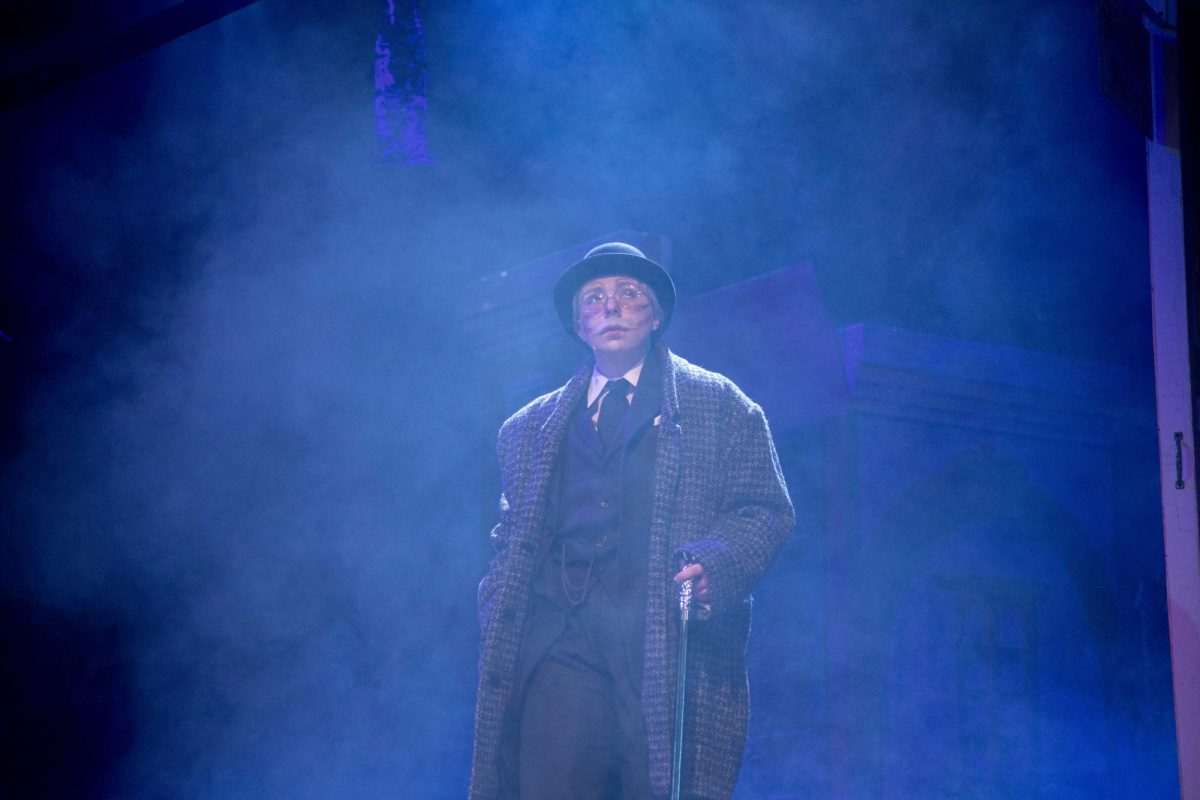Fatal shootings of Virginia journalists put horror on air
August 26, 2015
The man gripped a gun as he stood behind members of the news crew, watching them do a live broadcast. The journalists didn’t seem to notice that he had pointed the weapon right at them.
On Wednesday morning, as southwestern Virginia television viewers watched on live TV, a WDBJ-TV reporter and her cameraman were shot to death in the middle of their broadcast near Smith Mountain Lake.
Police later identified the gunman as Vester Lee Flanagan II, one of the journalists’ former TV station co-workers.
Advertisement
The person being interviewed, local Chamber of Commerce Executive Director Vicki Gardner, was wounded but was expected to survive.
By the time Flanagan, 41, had shot and killed himself after a police chase several hours later, his face and his actions had been widely broadcast on televisions across the nation and on social media.
Flanagan, who was black, cited racism and bullying as a motive, though Franklin County Sheriff Bill Overton said it was “obvious” that Flanagan “was disturbed in some way.”
The shooting was a grotesque moment of television that swiftly appeared on CNN and YouTube.
About eight shots were heard as reporter Alison Parker, 24, screamed and cameraman Adam Ward, 27, fell to the ground, and Ward’s camera spun to show a grim-faced man striding forward with a pistol in his hand.
When the broadcast feed quickly switched back to a camera at the TV station, it caught a WDBJ-TV anchor gaping in shock, her mouth open, unsure of what she’d just seen.
Hours after the 6:45 a.m. shooting, Flanagan — a native of Oakland, Calif., who used to work as a TV reporter at WDBJ-TV under the name Bryce Williams — apparently posted a video on Facebook and Twitter showing the shooting from the gunman’s perspective.
Advertisement*
The accounts were swiftly taken down, but not before the Twitter account posted messages complaining that Parker and Ward had not treated Flanagan well at the workplace.
Station officials said Flanagan had been fired and escorted out of the TV station after a year of clashing with station employees.
ABC News reported that someone claiming to be Flanagan had faxed a 23-page document to the network, which turned it over to authorities, and that Flanagan had called the network almost two hours after the shooting to say that authorities were “after me” and “all over the place.”
In the manifesto — titled “A Suicide Note for Friends & Family” — the writer expressed admiration for the Virginia Tech and Columbine High School mass shooters. He said he had been the target of racial discrimination, sexual harassment and bullying at work. He said his attackers were white females and black men, and disclosed that he was gay.
He was motivated, he said, by the Charleston, S.C., church shooting of nine African-Americans by a young white man in an apparent hate crime.
“Why did I do it? I put down a deposit for a gun on 6/19/15. The Church shooting in Charleston happened on 6/17/15,” he wrote. “What sent me over the top was the church shooting. And my hollow point bullets have the victims’ initials on them.”
Flanagan had bounced in and out of the TV news business for years, compiling a record of tense clashes with his co-workers and allegations of racism. His rage finally took over, according to his social media profiles and former co-workers.
“Vester was an unhappy man,” WDBJ-TV station manager Jeffrey A. Marks said on the air Wednesday. “We employed him as a reporter and he had some talent in that respect.”
However, Marks said, Flanagan quickly “gathered a reputation as somebody who was difficult to work with. … He was sort of looking out for people to say things that he could take offense to. And eventually, after many incidents of his anger coming to the fore, we dismissed him, and he did not take that well and we had to call police to escort him from the building.”
Anchors at the TV station held back tears as they interrupted live reports on the shooter’s whereabouts with memories of their co-workers. Both victims were in relationships with co-workers at the station.
On Twitter, Chris Hurst, a morning anchor, said he had been with Parker for almost nine months and they had planned to get married.
“She was the most radiant woman I ever met. And for some reason she loved me back,” he said on Twitter.
Ward was engaged to WDBJ-TV morning producer Melissa Ott, who had just taken another job. Wednesday was her last day producing the morning show.
Discussing the pair’s deaths on air, their co-workers’ voices shook with emotion. Crying could be heard in the background.
Using his professional name, Bryce Williams, Flanagan had posted on Facebook this month about seeking work, using a chatty style that was peppered with bitter recollections of jobs gone bad.
His Facebook and LinkedIn pages were quickly taken down, but the latter showed a slew of television station employers over the years as he moved from his native San Francisco Bay Area through Texas, Georgia, North Carolina and Virginia, stints where on a number of occasions he was terminated for difficult behavior.
Don Shafer, news director for San Diego 6 on the CW, worked with Flanagan at WTWC, a Tallahassee, Fla., NBC affiliate.
“He was a good on-air performer, a pretty good reporter and then things started getting a little strange with him,” Shafer said on San Diego 6 on Wednesday.
Before he was fired, Flanagan “threatened to punch people out” in the newsroom and often berated other reporters, Shafer said.
Flanagan filed a lawsuit in 2000 accusing WTWC producers of hurling racially charged insults at him.
He contended that a high-ranking station employee had referred to him as a “monkey” and said discussions about homicide victims in the newsroom routinely took on an anti-African-American tone. Court records show the case was dismissed in 2001.
(c)2015 Los Angeles Times
Visit the Los Angeles Times at www.latimes.com
Distributed by Tribune Content Agency, LLC.
Advertisement










